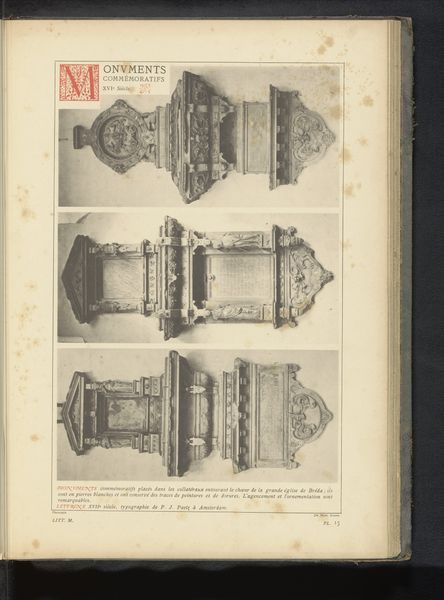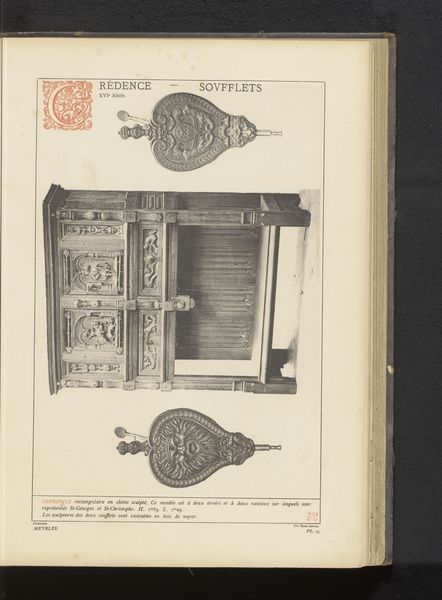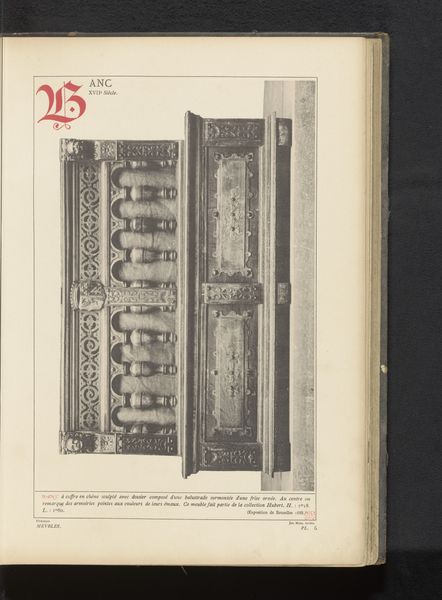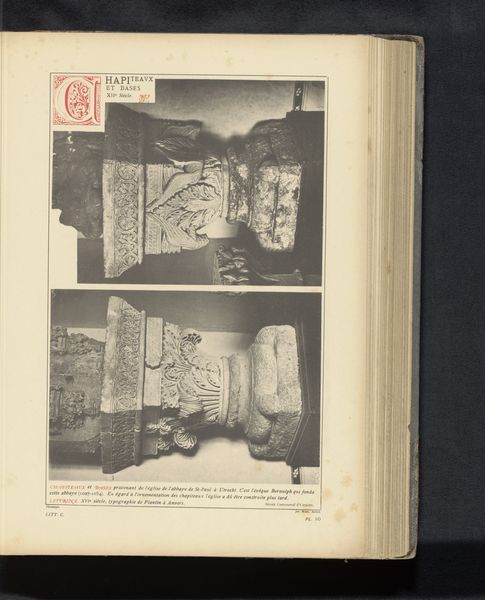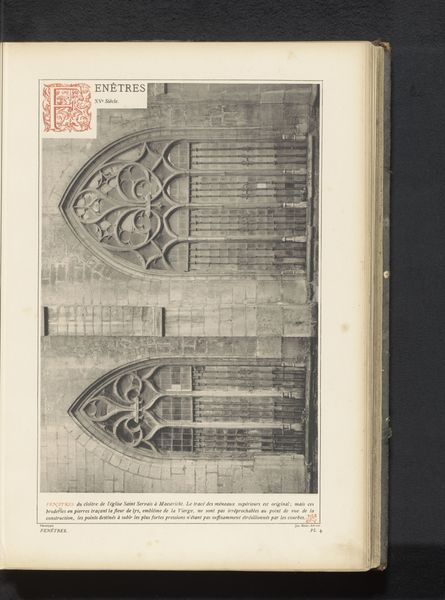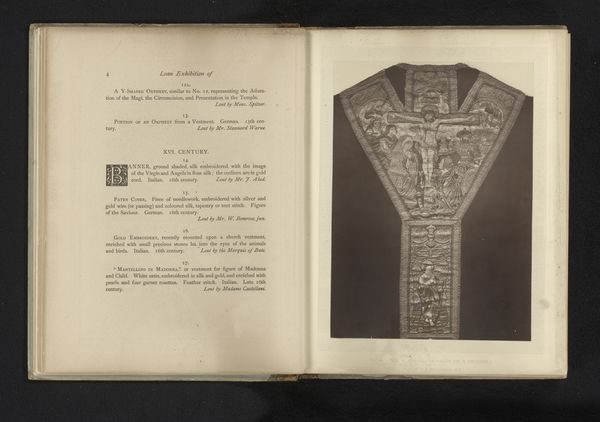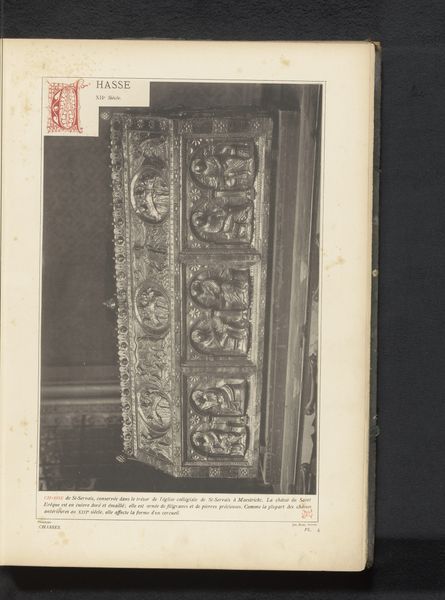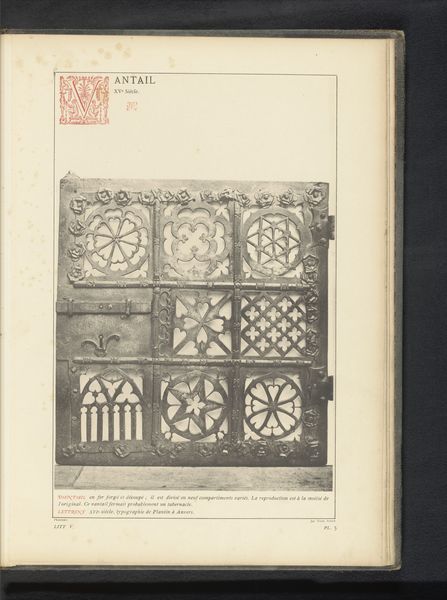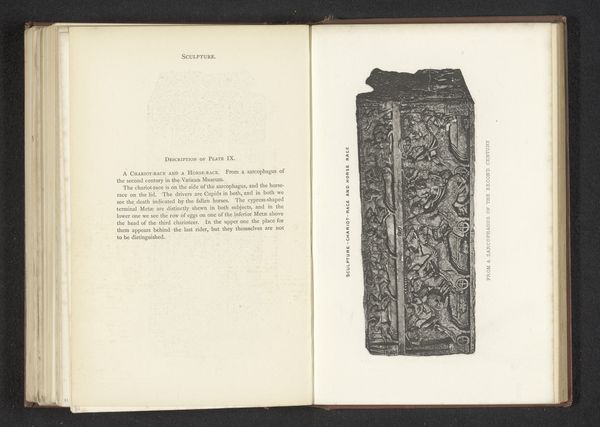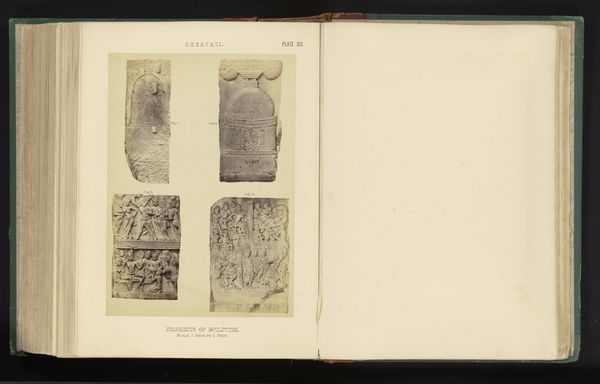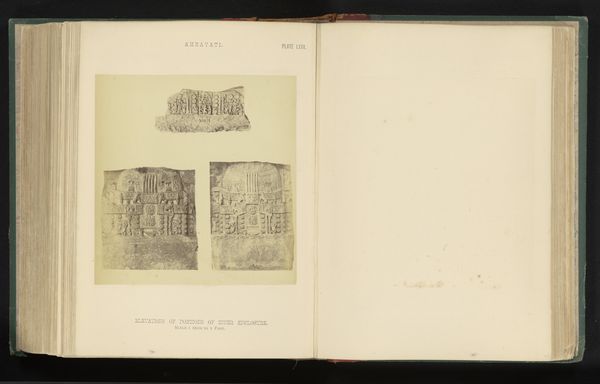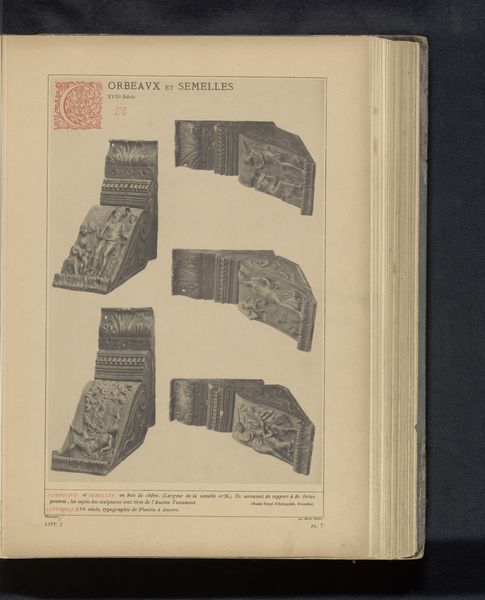
drawing, print, etching, paper, ink, engraving, architecture
#
drawing
#
medieval
# print
#
etching
#
paper
#
ink
#
geometric
#
column
#
pen and pencil
#
line
#
engraving
#
architecture
Dimensions: height 231 mm, width 340 mm
Copyright: Rijks Museum: Open Domain
Curator: Here we have an etching entitled "Drie gedecoreerde pilaren in de Grote of Sint-Bavokerk in Haarlem," or "Three Decorated Pillars in the Grote or St. Bavo Church in Haarlem." The artwork’s anonymous author created it at some point before 1880. Editor: My first thought is that this work feels surprisingly dense, with incredibly intricate patterns adorning what appears to be, as the title suggests, the bases of three pillars. Curator: Indeed. What's fascinating is that these decorations weren’t merely aesthetic choices; they were integral to the socio-political narrative of the church. Think about the function of religious spaces during this time, these decorations could act as didactic tools. Editor: Yes, that makes me see the engraving’s composition in a new light, where it's no accident these forms create such an overpowering effect through complex linearity, inviting contemplation on higher ideals, perhaps? Curator: Precisely! The pillars, so grand in scale within the physical church, were centers of public life; even now we still read geometric symbolism as divine or medieval architecture, and it provides insight into that world’s power structures. Editor: You’re drawing me towards a focus on context, while I'm fixated by the technique. Consider the use of line here—how precisely and repetitively those decorative patterns were etched. The technique seems integral to reinforcing that symbolic meaning. Curator: Exactly, these pillars visually represent the opulence of the church itself, so what purpose does reproducing this in etching serves? Printmaking allowed images like these to circulate widely, informing and, arguably, persuading the masses to keep their eyes in holy places. Editor: That element of replication really shifts the piece for me. So, while the pillars are beautiful, the true purpose is what they *represent.* I still wonder, could these decorative styles inform different styles from later time periods? It has really captured my interest. Curator: Considering its historical context, that makes sense! It’s remarkable how a single print opens up such avenues of inquiry, isn’t it? Editor: Absolutely, now when I look at it I’m noticing its layered effect, prompting the kind of formal, intellectual curiosity it might have elicited during its own time.
Comments
No comments
Be the first to comment and join the conversation on the ultimate creative platform.
